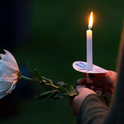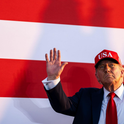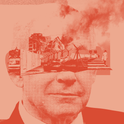On a recent trip to Iran with a group of westerners, sitting in the boardroom of a mid-sized producer of white goods in the foothills of the Zagros Mountains, someone in our party alluded in passing to the recent lifting of sanctions. The Chief Executive of this family business, a United States-educated Master of Business Administration who is looking forward to handing over to his son, himself recently returned from studies abroad, interrupted the speaker and asked if she was joking—“about the sanctions, I mean.” He smiled at our puzzled expressions. “Contrary to what you all think, this country is still living under sanctions.”
Of course some sanctions against Iran have come off. We watched it happen on 16th January, when—much sooner than sceptics had expected—the Iranians were commended for carrying out their commitments with regard to mothballing or reconfiguring key parts of their nuclear industry, and John Kerry, US Secretary of State, announced that his country and the European Union would “immediately lift nuclear-related sanctions.” (That focus on “nuclear-related” sanctions is all important: US terrorism- and human rights-related sanctions remain in place, meaning that most American business with and investment into Iran remains illegal.)
Iran is now able to sell its oil to Europe for the first time since early 2012—as well as other commodities such as steel and petrochemicals; its banks have been reconnected to Swift, the interbank messaging service that handles cross-border payments; and some of the world’s biggest companies, from Shell to Peugeot, Airbus to Danieli, have been falling over themselves to get a piece of the world’s last big frontier market.
This is the theory of what has been happening over the past four months. What the CEO in the Zagros meant when he said that Iran continues to live under sanctions is that theory and practice are so far apart as to make his life indistinguishable from pre-January days. His company remains unable to access top-of-the-range German components without long delays, and export remittances still have to come through a shell company in Dubai. The old frustrations of extra costs and compromises on quality—the Chinese are usually ready to supply what the west will not—haven’t gone away.
"Trade and investment with Iran are vital if the nuclear deal, signed last year, isn't to flounder"Stepping back and looking at the Iranian economy as a whole, it’s obvious that the long-awaited reconnection of Iranian producers with western capital has yet to happen beyond a few European family offices dribbling in tens of millions through Turkey and Azerbaijan. For all President Hassan Rouhani’s grandstanding about attracting $50bn worth of foreign capital in just a year, and the European trips he has made since 16th January (beaming on the steps of the Elysée, beaming with the Pope), for all the multinationals that have been marching into Tehran, meeting ministers and signing memoranda of understanding—for all this, little of substance has happened.
The immediate trouble is that Iran continues to be ostracised by the top-tier European banks that are big enough to handle GDP-boosting transactions—the kind that would allow Iran to pay for the 118 airliners that it wants to buy from Airbus, or that would enable multinationals such as Groupe PSA, which makes Peugeot and Citroën, to pass across their share of a planned €400m joint venture with Iran Khodro, the country’s biggest carmaker. (With a vehicle ownership ratio six times less than that of Europe, and a large middle class, the market is certainly enticing.) A recent statement to Le Monde by “a source close to Renault”—Peugeot’s rival for Iranian market share—said it all: “Renault will significantly intensify its activities in Iran as soon as fluid relations are restored between French and Iranian banks.” But such relations haven’t been restored, and in the meantime European companies eager to open an office in Tehran are having trouble transferring the money they need to pay the rent and hire staff, let alone make significant investments. A British supplier of medical devices was recently informed by his bank, HSBC, that it will have nothing to do with the Iranian transactions he is planning, despite the fact that they are perfectly legal.
In fact trade and investment with Iran aren’t just perfectly legal—they’re vital if the nuclear deal, which was signed last year amid happy predictions that it would draw the venom out of relations between Iran and the west, perhaps even re-establishing them on a basis of mutual respect, isn’t to flounder. Failure wouldn’t simply risk plunging Iran and the west back into their former state of mutual animosity. It would have a huge effect on the future ability of the west to use sanctions as a tool to get states to modify their behaviour. Sanctions can only be effective if they carry a promise of relief. If, once legally lifted, they don’t in practice come off, what incentive do states have to modify their behaviour in the first place?
A lot of the bankers’ reticence is muscle memory. Starting during the presidency of George W Bush, but extending into the Barack Obama era, the US Treasury’s Office of Terrorism and Financial Intelligence, which was headed by a hawkish and extremely effective under-secretary called Stuart Levey, cajoled and intimidated major non-US banks into refusing to transact with Iran and other American foes. Those that didn’t listen were hit with monster penalties. Standard Chartered paid almost $1bn and HSBC $1.9bn. Deutsche Bank, ING and Crédit Agricole paid lesser amounts. In 2014 BNP Paribas paid the record, $8.9bn.
Why do non-American banks remain transfixed by risks that—in theory—no longer exist? Guidance published by the US government has confirmed that European banks handling Iran business will not be subject to secondary sanctions—that is to say, penalties imposed by the US on non-US entities operating in other jurisdictions—unless their business is with still-proscribed institutions such as the Revolutionary Guard. But there is a problem of trust. The European banks fear that the US, having acted so effectively to clamp down on their Iran business in the past, will find other pretexts to maintain an institutionalised policy of commercial containment. (The US Treasury has designated Iran a “jurisdiction of primary money laundering concern”). US officials make no bones about refusing to facilitate European investment with Iran while their own businesses are unable to join.
It’s little wonder that now, even in the face of an Iranian charm offensive and hand-holding sessions with Kerry, the big European banks continue to behave as if sanctions are still on. In the words of Levey, who has transmogrified elegantly into HSBC’s Chief Legal Officer, “governments can lift sanctions, but the private sector is still responsible for managing its own risk.” He cited concerns over money-laundering, Iran’s “underlying behaviour,” and a fear that banks might fall foul of American courts enforcing “complicated US restrictions” over which the State Department has no control, to justify HSBC’s absence from the market. A variation of HSBC’s high-minded squeamishness is noticeable not only among the other big banks, but also across different sectors, including hydrocarbons, insurance and advertising—many of the world’s biggest companies aren’t ready to take the plunge.
Where sanctions relief has had a positive effect is on oil sales. By April, exports had almost doubled from the January level of 1.1m barrels per day, and production was up to 3.5m barrels per day, just half a million barrels shy of the pre-sanctions level. Iran’s ambitions to regain market share have opened a new front in its feud with fellow Opec member Saudi Arabia—adding to already venomous discord over Syria and Yemen, and the more general Sunni-Shia enmity. Tankers bearing Iranian crude have been prevented from entering Saudi and Bahraini ports on their way to Europe. But in April, Iran managed to load 490,000 barrels per day bound for Europe, well over half the pre-2012 level.
The elements of uncertainty that one has to factor into any consideration of Iran’s future strategic direction are manifold. The west remains reluctant to invest in Iran in a big way—but may be induced to over time. (Japanese banks, and smaller European ones, will probably be the first to “break,” under insurance from their own governments’ export credit agencies). Additional doubts have been created by the possibility of a President Donald Trump, who has vowed to “renegotiate” the nuclear deal if elected—and who might call back elements of the neo-con old guard (Levey for Treasury Secretary?).
"According to one western diplomat, Iran gave £30bn in war aid to Bashar al-Assad between 2011 and 2014, and $600,000 to Hezbollah"Inside Iran it is no longer taboo to acknowledge the mortality of the 76-year-old Supreme Leader, the anti-western Ayatollah Ali Khamenei, and that discussion inevitably leads to speculation over whether the mullah who replaces him will make further gestures to the west, including a formal abjuring of the country’s enmity for Israel.
Iranians believe that their country’s stature needs to be reflected in power relations, and that the only bloc that can address it on equal terms is the west. For all Iran’s close ties to China, its number one trading partner, and its long history of diplomatic cooperation with Russia (and now military, as joint members of the pro-Bashar al-Assad axis) there should be no illusion that Iran regards either of these geographically closer powers as desirable long-term partners.
It was a need to be taken seriously by the west that pushed the last Shah to give his absurdly expensive and vainglorious party for the world’s leaders in the ruins of Persepolis in 1971 (Queen Elizabeth wisely stayed away); and it was the same need, sharpened by a fear of US-inspired regime change, which lay behind the Islamic Republic’s more recent efforts to build up its nuclear potential.
The world has changed a great deal since Iran was last persona grata, back in the 1970s, and Israel and Saudi Arabia nowadays regard a smiling, diplomatically integrated Islamic Republic strutting its stuff on the world stage as more of a threat than a snarling but contained one. They contend that Rouhani’s Iran is a wolf in sheep’s clothing, for which there is little evidence. Their real fear is that a diplomatically successful Iran will end up supplanting them in American esteem.
There is no doubt that the mullahs’ Iran is a more serious and independent regional player than the Shah’s husk-empire ever was. Iran’s leaders have acted as kingmakers in Iraq, Syria, Lebanon and Afghanistan. Kerry has spoken to Iran’s Muhammad Javad Zarif more than to any other foreign minister, and the deal which solved the nuclear impasse, while severely curtailing Iran’s nuclear activities in the short term, will in the long term let the country into the club of fully-fledged civilian atomic powers. (Not, however, into the club of nations with a nuclear bomb—but that no longer seems like the criterion of international success for Iran.) Somehow, in an age of crippling sanctions, Iran managed to carve out a market for its goods from Basra to the Hindu Kush (the white goods company I visited in the Zagros, for example, exports 400,000 units to Iraq every year). Even the Shia shrines of southern Iraq, after being bombed by Sunni militants, are restored by Iranian craftsmen. This is Iran’s soft power.
During a series of interviews with Jeffrey Goldberg, published in April in the Atlantic, Barack Obama issued a remarkable validation of Iran’s regional ambitions. “The competition between the Saudis and the Iranians,” he said, “requires us to say to our friends as well as to the Iranians that they need to find an effective way to share the neighbourhood and institute some sort of cold peace.” For the president of a country that until around a decade ago was flirting with the idea of regime change in Iran, the suggestion that Iran can now soberly take up its responsibilities as one of the Middle East’s two main powers is startling. Unsurprisingly, his words caused disquiet among senior Saudis, one of whom, Turki al-Faisal, the former head of Saudi intelligence and the Kingdom’s ambassador to Washington in the mid-2000s, excoriated Obama in an open letter in which he said, “you have pivoted to Iran so much that you equate the Kingdom’s 80 years of constant friendship with America to an Iranian leadership that continues to describe America as the biggest enemy, that continues to arm, fund and support sectarian militias in the Arab and Muslim world… that continues to prevent the election of a Lebanese president through Hezbollah, which is identified by your government as a terrorist organisation, that continues to kill the Syrian Arab people in league with Bashar al-Assad.”
Back in the Shah’s time, Iran’s regional policy centred on maintaining good relations with fellow monarchs (he was even briefly married to the sister of Egypt’s King Farouk, an example of Shia-Sunni bridge-building that would be hard to imagine today) and being America’s policeman in the region. The Islamic Republic has, by contrast, played the sectarian game, spreading influence through clients among Shia and pro-Shia groups—though it has not been averse to alliances with Sunni groups such as Hamas.
The country’s friendship with Assad is the expedient tactical alliance par excellence. With its secularised outlook and loose bundle of only vaguely Shia beliefs, the dictator’s Alawite-dominated state passes none of Iran’s tests of religious purity. However, Assad allows crucial throughput to Hezbollah, Iran’s offshore anti-Israel platform and, for both Iran and the Alawites, Islamic State (IS) is an existential threat. Many senior Iranians don’t discern anything like the same determination in the US’s approach, however. They suspect that IS is part of an American plan with Saudi involvement to pit Sunnis against Shias in order to get all sides off Israel’s back. However eccentric this belief may appear, it is strong in the very highest Iranian echelons and is vital to understanding Iran’s continued jaundiced view of American intentions.
According to one experienced western diplomat I recently spoke to, Iran provided some $30bn in war aid to Assad between 2011 and 2014 alone, and $600,000 to Hezbollah over the same period. In addition there are Revolutionary Guard “advisers” and “volunteers” drawn from among Iran’s two million-odd unregistered Afghan refugees (I recently witnessed the funerals of seven of them in the shrine city of Qom). Iran’s regular army is also now contributing combat martyrs for the first time since the country’s eight-year war with Saddam Hussein’s Iraq in the 1980s. And Iran, the same diplomat told me, is privately much more insistent that Assad must stay than is Russia.
In return for this support, Assad grants Iran access to Hezbollah, the prestige that attaches to defending Shia shrines in the country, and relief from the sense of isolation that would otherwise be the lot of a Shia power in a landscape dominated by Sunni jihadis and Saudi Arabia.
The feuding between Iran and its Shia allies on the one hand and the Saudis and their fellow Sunnis on the other is asymmetric. Behind the Saudi hatred for Iran lies contempt for Shiism, which some Wahhabis regard as hardly Islam at all—even if few go as far as IS in regarding the Shia as apostates deserving of death. This contempt is not reciprocated by Iran; the ayatollahs are careful not to insult Sunnis tout court, in part, no doubt, to avoid endangering Sunni-surrounded Shia pockets in Iraq, Lebanon and elsewhere.
In the light of Iran’s alliance with the Alawites, and its good relations with Sunni Turkey and Ibadi Oman, it’s probably fair to say that the leadership isn’t as hung up about sectarian divisions as Saudi Arabia’s is. Sunni-Shia violence of the kind we are now used to is a recent phenomenon, as illustrated by the fact that in 1951 Sayyid Qutb, godfather of violent Sunni jihadism, issued a call for solidarity to the Iranian ayatollah and anti-colonialist Abulqassem Kashani. “One united cry echoes in all parts of the Islamic world,” proclaimed Qutb—unprophetically, as we now know.
For all its instrumental use of the sectarian card, Iran’s increasing alignment with its fellow-Shias has created a ghetto from which it may find it hard to escape. The Iranians have indicated that they are amenable to precisely the kind of power-sharing arrangement that Obama suggested, and to improved relations with the Saudis, but this clashes with Iran’s regional assertiveness, which the Saudis see as illegitimate—they do not regard Shia Iran as an equal to be engaged, but a threat to be contained. Only when—and if—all parties to the Syrian conflict become too exhausted to continue fighting, and display flexibility to the other’s strategic interests, will the current escalation of tensions be susceptible to reverse.
Iran hankers for acceptance by the west but this jars with a desire for regional power that often leads it into conflict with western interests. The nuclear deal and Obama’s cooler relations with Saudi Arabia have indeed opened up an opportunity for the Islamic Republic to demonstrate that it stands against violent Islamism, and that it can be a force for stability in a region in which the US appetite for involvement is much diminished. But Iran’s impulse to carve out its own sphere of influence has brought it into an alliance with the state terror of Assad, and it continues to reserve the right to launch remote attacks on Israeli interests. This is not policeman-like behaviour—however much Iran might fancy its old role back.












